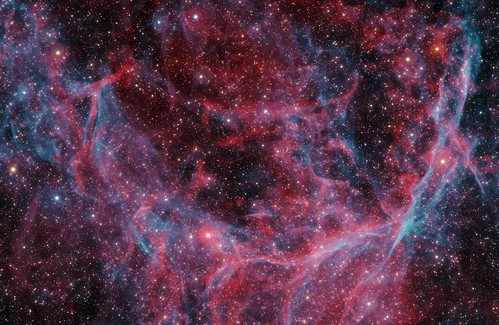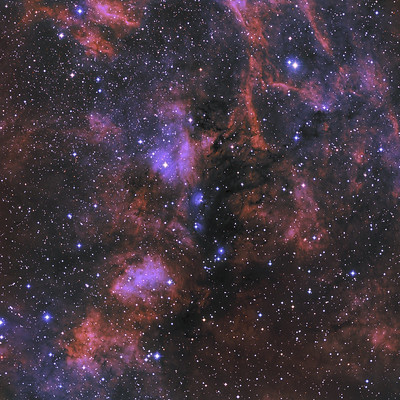Hello,
Here is my image of M39 with SH2-124 The "Almost Nothing" Nebula. I was looking for some less imaged objects and noticed
a faint hydrogen patch near M39 / NGC7092. After about 40hrs of
exposures, an interesting nebula came into view. It looks very similar
to NGC6188 the Dragons of Ara in the Southern Hemisphere.
Image link on my Astrobin site:
https://www.astrobin.com/2ybrjj/

Photo captured from Tacoma, WA.
Imaging Telescope: William Optics Gran Turismo 81 WIFD
Imaging Camera: ZWO ASI2600MM Pro
Mount: ZWO AM5
Filters: Chroma Blue 36 mm · Chroma Green 36 mm · Chroma H-alpha 3nm
Bandpass 36 mm · Chroma OIII 3nm Bandpass 36 mm · Chroma Red 36 mm
· Chroma SII 3nm Bandpass 36 mm
Dates:July 31, 2023 · Aug. 11, 2023 · Aug. 12, 2023 · Aug. 14, 2023
· Aug. 15, 2023Frames:
Chroma Blue 36 mm: 81×120″(2h 42′)
Chroma Green 36 mm: 60×120″(2h)
Chroma H-alpha 3nm Bandpass 36 mm: 212×300″(17h 40′)
Chroma OIII 3nm Bandpass 36 mm: 70×300″(5h 50′)
Chroma Red 36 mm: 107×120″(3h 34′)
Chroma SII 3nm Bandpass 36 mm: 105×300″(8h 45′)
Integration:40h 31′
Avg. Moon age: 24.18 days
Avg. Moon phase: 27.13%
Thank you for considering,
 Perseids 23 Fireworks by Pierandrea Folle, su Flickr
Perseids 23 Fireworks by Pierandrea Folle, su Flickr











